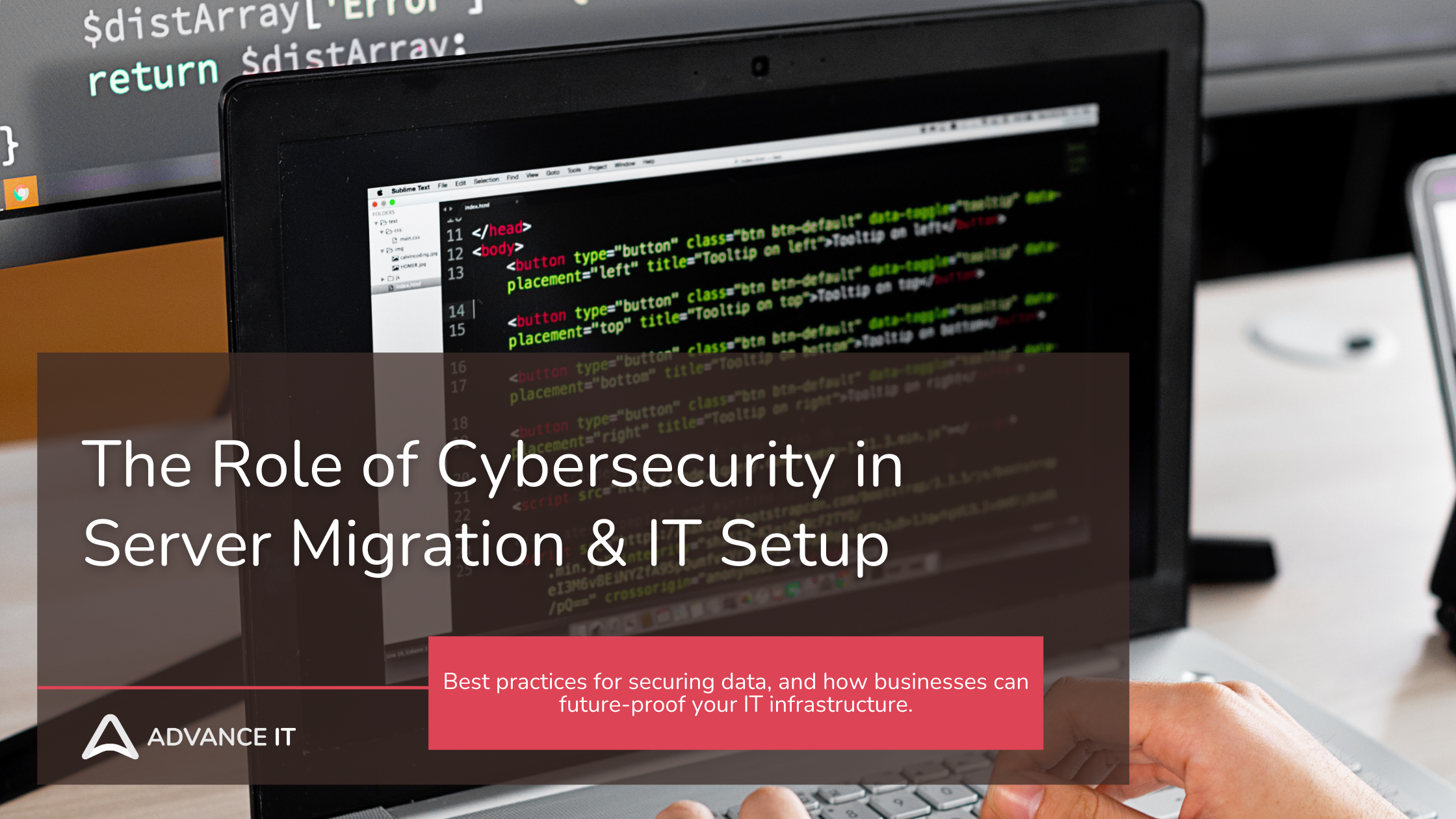The Role of Cybersecurity in Server Migration & IT Setup
Server migration and IT infrastructure setup are pivotal moments in a business’s digital transformation. Whether shifting from on-premise servers to the cloud or upgrading existing IT systems, cybersecurity must be a top priority. Without robust security measures, companies risk data breaches, operational downtime, and compliance violations— all of which can lead to financial and reputational damage.
In this expert guide, we’ll explore the critical role of cybersecurity in server migration and IT setup, best practices for securing data, and how businesses can future-proof their IT infrastructure.
Why Cybersecurity Matters in Server Migration
Moving data, applications, and systems from one environment to another exposes your IT assets to potential security vulnerabilities. Cybercriminals often target migration phases because businesses focus on operational functionality rather than security.
Top Risks During Server Migration
Data Leakage – Improper handling of files and databases can expose sensitive information.
Unauthorized Access – Weak authentication measures can allow hackers to exploit security gaps.
Downtime & Business Disruptions – Poorly planned migrations can lead to service outages, affecting productivity.
Misconfigurations – Setting up a new server without proper security policies can create exploitable loopholes.
Compliance Violations – Failure to secure customer data can breach industry regulations (e.g., GDPR, HIPAA, PDPA).
💡 Fact: According to IBM’s Cost of a Data Breach Report, the average cost of a data breach in 2023 was $4.45 million—a risk no business can afford during IT migration.
Best Cybersecurity Practices for Secure Server Migration
Whether you're transitioning to cloud servers (AWS, Azure, Google Cloud) or on-premise setups, these best practices ensure a secure, seamless migration with minimal risk.
1️⃣ Conduct a Pre-Migration Security Audit
Before moving anything, assess your current IT environment for vulnerabilities.
Identify critical data & assets that require extra security.
Perform a penetration test to detect weak points.
Evaluate user access permissions—remove unauthorized accounts.
💡 Tip: Use cybersecurity tools like Microsoft Defender for Endpoint or Qualys Vulnerability Scanner to detect security gaps.
2️⃣ Encrypt All Data Before Migration
Data encryption ensures that even if information is intercepted, it remains unreadable to unauthorized parties
Enable AES-256 encryption for sensitive files.
Use SSL/TLS encryption for secure data transfers.
Encrypt backups in transit & at rest.
💡 Best Practice: If migrating to the cloud, use customer-managed encryption keys (CMEK) to maintain control over your data.
3️⃣ Implement Multi-Factor Authentication (MFA)
One of the easiest ways to prevent unauthorized access during migration.
Require MFA for all users, especially administrators.
Use hardware security keys (YubiKey) or mobile authentication apps (Microsoft Authenticator, Google Authenticator).
Set conditional access policies (e.g., restrict logins from unknown locations).
💡 Fact: Microsoft states that MFA prevents 99.9% of account breaches—a must-have for IT security.
4️⃣ Secure Network Connections & VPN Access
Cyber attackers exploit weak network security during migration.
Use VPNs (Virtual Private Networks) for remote connections.
Implement zero-trust network access (ZTNA) to limit exposure.
Deploy firewall rules to block unauthorized traffic.
💡 Best Practice: If using cloud services, enable Azure Private Link or AWS PrivateLink to keep data within secure network boundaries.
5️⃣ Monitor for Threats in Real-Time
Security doesn’t stop once the migration is complete—real-time monitoring is crucial.
Deploy Security Information and Event Management (SIEM) tools for log analysis.
Use AI-driven threat detection to identify unusual activity.
Implement automatic alerting for suspicious access attempts.
💡 Tools to Use: Microsoft Sentinel, Splunk, or Google Chronicle for threat intelligence & monitoring.
Securing IT Infrastructure After Migration
Once migration is complete, you need ongoing security measures to prevent cyberattacks and ensure long-term data integrity.
1️⃣ Implement Strong Identity & Access Management (IAM)
Use role-based access control (RBAC) to restrict permissions.
Set least privilege policies—only give access to necessary personnel.
Enable automatic user deactivation for employees who leave the company.
2️⃣ Automate Security Updates & Patch Management
Keep operating systems and software updated to prevent zero-day attacks.
Use automated patch management tools like Microsoft Intune, AWS Systems Manager, or Google Patch Management.
💡 Fact: Unpatched vulnerabilities account for 60% of data breaches, according to cybersecurity research firm Ponemon Institute.
3️⃣ Conduct Regular Cybersecurity Training for Employees 🎓
Educate staff on phishing scams, password hygiene, and secure file sharing.
Run simulated phishing attacks to test employee awareness.
Provide compliance training for industries with regulatory requirements (e.g., finance, healthcare).
💡 Tip: Implement Security Awareness Training Programs through platforms like KnowBe4 or Proofpoint.
Choosing the Right Cybersecurity Partner for Server Migration
A secure IT migration requires expert planning, execution, and monitoring. Working with a trusted IT security provider ensures your data remains protected throughout the process.
Cybersecurity Risk Assessments – Identify potential threats before migration.
Cloud Security Solutions – Set up secure cloud configurations for AWS, Azure, or Google Cloud.
Incident Response & Threat Detection – Proactive monitoring for post-migration security threats.
Looking for a cybersecurity expert to handle your IT migration?
Advance IT specializes in secure server migrations, IT infrastructure setup, and cybersecurity protection for businesses of all sizes. Whether moving to the cloud or upgrading on-premise servers, we ensure 100% secure, zero-downtime transitions.
Get in touch with Advance IT today for a risk-free consultation!
····························································
With over 15 years of experience and a strong focus on IT support, we’re proud to have 99.5% of our customers staying with us long-term.
‣ Address: 8 Burn Road, #11-11 Trivex Singapore 369977
‣ Email us at: contact@advanceit.sg
‣ Call our team: +65 6592 8458





How can you be sure your data, and your patients' trust, are protected?
Let’s break down how encrypted cloud storage works, how to choose a compliant provider in Singapore, and what steps to take to secure your records today.